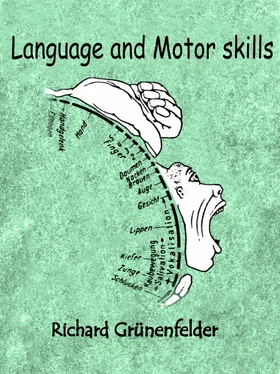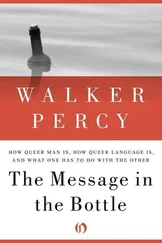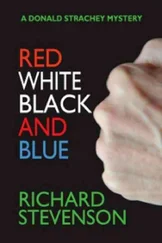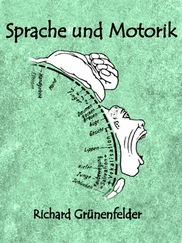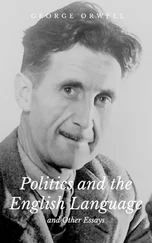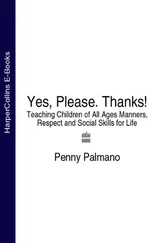Language and Motor skills
In this analysis from October 1978, the area of language and motor skills, as well as their context is examined.
The original analysis from 1978 was scanned and corrected by language. The actual content has not changed.
The results of this study should of course be considered in the context of 1978.
Richard Grünenfelder am 4.4.2020
Original seminar paper with Prof. K. Widmer
Imprint:
Richard Grünenfelder
Copyright: © 2020 Richard Grünenfelder
published by: epubli GmbH, Berlin
www.epubli.de
ISBN 978-3-7375-2687-6
The topic of language and motor skills arose in connection with the seminar "Early Mother-Child Interaction" by Prof. Dr.Widmer and Dr. Nufer. The goal of this work is to study the area of speech, that is, especially the connection between language and motor skills. Based on existing literature, I should familiarize myself with this topic. In order to find out whether there is any need for such a job among the people who deal with children who are speechless and speech impaired, I have contacted the home "Schwyzerhüsli" in Zurich. There I was told that they had many problems and questions. However, they would try to solve them in their daily work, in close cooperation with the child. Therefore, they have great reservations about such "investigations." We had then decided that I would first delve into the literature and then contact them again. I am trying to do that now:
2 Literature on language and motor skills
To get a little closer to the subject, I asked myself why one comes to a connection between language and movement. The task is therefore to search for literature in which the two areas occur together:
Luchsinger / Arnold 1970 recommend the so-called mauling method for the treatment of all those voice and speech disorders in which the functional perturbation component (e.g. stuttering) predominates. It is about the fact that the movements of sound formation are in principle similar to the movements of chewing. They explain: "As long as the mouth organs of the patient function perfectly for eating and drinking, then there is no reason why the same organs should not serve as well for the sound of speech. Subsequently, the patient is instructed to make loud chewing movements while mumbling certain words or phrases. Later, one reduces the extent of the chewing movements until the patient merely imagines that he is chewing during his speech. "(Luchsinger / Arnold 1970, p.389) The authors themselves criticize the fact that although speech and eating occupy the same peripheral organs, the centers who control speech and food are very different from each other.(see p.390).
To clarify the problem of "stammering", Böhme quoted in 1974 an older work by Luchsinger, but that still seems to be up to date! "If one compares children who stammer between the 4th, 5th and 6th year of age, then the clear picture arises that in the case of slightly motor handicapped people up to the age of six a balance is established. Simultaneously with the improvement of the fine motor skills also lighter speech disturbances fix themselves. The children correct themselves, the language becomes normal. In the group of "motorically debilitating" there was almost always a pronounced stuttering, while the "motorically normals" rarely had a slight stammering. So it can be said that in the "stammer" - especially in the universal "stammer" - in addition to the sensory-acoustic factor, the general motor skill is also of great importance, In addition to the sensory-acoustic factor, the general motor skill is also of great importance, and must be taken into account in speech therapy as well" (Böhme 1974, p. 184). Böhme himself then gives the recipe for the motor stammerer: "Through the use of physiotherapy, etc., the entire motor system develops, and at the same time the fine motor movement sequences of the articulation organs are favorably influenced" (p 189).
In his rather medical work, the causal relationship between fine motor training and stammering is not discussed. Apparently, this therapy is simply applied because it shows a more or less great success.
Schulze 1978 provides a pre-training for language education, hearing and speech education a method based on emotional, multisensory and sensorimotor basis. Here, among many other types of training (contact ability, emotional range, attention, concentration, smell, taste, etc.) is also the training of moving and the finer movement (hand, face and mouth motor skills) indicated (see Schulze 1978, Pp. 126-128). As with Böhme, the connection between this movement training and the language is not discussed at all. He seems to be thinking of the idea: to train as much as possible, and then, among other things, the language develops.
In a textbook for speech therapists by Führing among others (1976), a number of methods for treating stuttering are discussed .It is said at this point: "That most stutterers are clumsy in all motor utterances, may well be accepted as proven." (Lead et al 1976, p.120). and "Only with the inclusion of large and fine motor skills, only with the use of the phylogenetic and ontogenetically deep-rooted psychomotor coordination of speech motor skills and overall body expression techniques can the speaking exercise therapy be incorporated into meaningfully directed motor movements." (P. 119).
Although the background of the method is not dealt with in more detail here, some things may be clarified if the phylogenetic and ontogenetic development of humans is analyzed in this context.
Knura proves 1974 among other things in stammerer:
in the central area: phonemic differentiation weakness, disturbances of the motor-kinesthetic analyzer, immaturity of motor centers and pathways
in the expressive area: motoric awkwardness, etc. (see Knura 1974, p.110).
Again, we find the strong linkage of a speech disorder with a motor disorder. In this study of the German Education Council, however, this phenomenon is given no further attention, and therefore no therapy considering these facts is proposed.
In Wohl's concept of language theory, the movement is included. His movement theory is based on the fundamentals of the 1st and 2nd signal system. That Man experiences in daily experience e.g. the "house" (1st signal system). Due to the constant reference, the term "house" is slowly becoming apparent in him (2nd signal system). The 1st signal system then steps over the 2nd in the background. From his consideration then comes the most important conclusion, "... that the process of thought is nothing other than a specific form of human movement, its latent initial phase and that the anticipatory role of this input phase rests in relation to the actually outwardly visible movement on programming and control of this movement." (see Wohl 1977, p.148). From this thesis he derives a comprehensive conception of human motor skills, which he describes in 17 points. The first point says: "In the light of existing research, the thesis that language is the immediate reality of thought is fully confirmed and that without verbal material associated with the corresponding movement of the speech muscle no thinking is possible." - These results prove that the thinking process is by no means an exclusively neural activity, but above all a motor one. " (S.148,149)
I very much question this result, because you only have to check yourself if you can not do a math problem without movement of the speech muscles! It seems to me that another combination of thinking and speaking, as Lurija described in 1969, makes more sense (see Chapter 5, p.21). Furthermore, I find it very difficult to draw practical and applicable conclusions from Wohl's highly theoretical model.
In the work of Eggert, Schuch and Wieland in 1975 with the promising title "Psychomotorisches Training", students who were weak in reading and writing were tested.
Читать дальше
